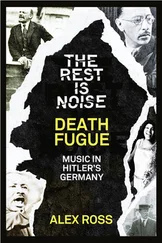Schwerin von Schwanenfeld, Count Ulrich Wilhelm (1902-44)
As a student advocated the political renewal of Germany on Christian-socialist foundations and opposed the Nazis from their early days. Convinced as early as 1935 that Germany could only be liberated from the Nazi regime by eliminating Hitler, by force if necessary. Maintained friendly relations with Yorck and Schulenburg and close contacts with Military Intelligence and the Kreisau Circle. One of the most influential intermediaries between military and civilian resistance circles. Conscripted into the Wehrmacht in 1939 and became Field Marshal Witzleben’s adjutant in Paris in 1941. Oster managed to have him sent back to Berlin in 1942. Although convinced after 1943-44 that a coup could no longer prevent the necessity of unconditional surrender, continued to advocate assassinating Hitler. Arrested in army headquarters on July 20. Sentenced to death on August 21 and executed in Plötzensee prison.
Stauffenberg, Count Claus Schenk von (1907-44)
Career officer. Member of the south German Catholic nobility but had Prussian ancestors as well. Part of the circle around the poet Stefan George. Joined a cavalry regiment in 1926. In 1938 became staff officer under Major General Erich Hoepner, who numbered among the conspirators led by Witzleben. After the French campaign, posted to the OKH organizational section. In early 1943 joined the Tenth Panzer Division covering Rommel’s withdrawal in Africa. Seriously wounded on April 7, 1943. Beginning in the fall of 1943 became the crucial figure in the resistance to Hitler. Named chief of staff in the General Army Office in October 1943 and then chief of staff to the commander of the reserve army. Slated to become secretary of state in the War Ministry after a successful coup. Resolved in the summer of 1944 to carry out the assassination attempt himself, because he had access to Hitler’s military briefing conferences. Tried to kill Hitler on July 20, 1944, in the Wolf’s Lair near Rastenburg, East Prussia. Thinking he had succeeded, flew to Berlin to help carry out the coup from army headquarters on Bendlerstrasse. Executed there on the night of July 20-21 along with other fellow conspirators.
Stieff, Helmuth (1901-44)
Career officer. Joined the army general staff in 1938. Became chief of the OKH organizational section in October 1942. Wrote many letters during the war, primarily to his wife. Although only a few have survived, they are among the most moving accounts of the period. Recruited into the active resistance by Henning von Tresckow. Although at first volunteered to kill Hitler, reneged after much vacillation. Arrested on the night of July 20-21 at Führer headquarters and brutally tortured at subsequent interrogations. Withstood for several days all attempts to force him to name his fellow conspirators. Condemned to death by the People’s Court at the first trial of conspirators on August 8 and executed the same day in Plötzensee prison.
Stülpnagel, Carl-Heinrich von (1886-1944)
Career officer. A friend of Beck’s since the early 1930s. Typified a certain kind of cultivated officer, with an interest in science and literature. Participated in the plans for the September conspiracy of 1938. Quartermaster General on the army general staff from 1938 to 1940. Became a general in the infantry and then commander in chief of the Seventeenth Army in 1941, and served as military commander of France from 1942 to 1944. Together with Hofacker, provided support in Paris for the coup by the military resistance. Only in his command area were the conspirators’ plans successfully implemented on July 20, 1944. When the failure of the coup became apparent, attempted suicide but succeeded only in blinding and seriously wounding himself. Sentenced to death by the People’s Court on August 30 and executed the same day in Plötzensee prison.
Tresckow, Henning von (1901-44)
Career officer, eventually brigadier general. In the late 1920s joined with officers who supported Hitler but soon changed his mind and ultimately proved one of the most courageous opponents of the regime. From 1941 to 1943 was a general staff officer in the high command of Army Group Center. In 1942 became a colonel. Beginning in mid-1942 planned a number of attacks on Hitler. Posted in late July 1943 to the elite “Führer reserve.” Worked in Berlin with Stauffenberg on transforming the Valkyrie plans for “internal disturbances” into plans for a coup d’ état. Dispatched in the fall of 1943 to the southern wing of the eastern front. In late November 1943 made chief of staff to the Second Army. Maintained his contacts with the conspirators and cited in the Kaltenbrunner reports as the “driving force” and “evil spirit” behind the coup attempt of July 20. When the attempt failed, killed himself at the front with a grenade.
Trott zu Solz, Adam von (1909-44)
Lawyer. Studied at Oxford in 1932-33. Posted to China between 1937 and 1938, traveling by way of the United States. Used that trip and numerous others to establish contacts on behalf of the resistance, sometimes with exiled opponents of the regime. Joined the NSDAP in 1940 to provide a cover. Legation counselor in the Foreign Office’s information division. Later worked in the India branch. Foreign policy adviser to the Kreisau Circle. Undertook further travels abroad in 1941 and 1943 to explore the Allied attitude toward a new German government but bitterly disappointed by the indifference of the Western Allies. After the attempted coup of July 20, 1944, not arrested until July 26. Condemned by the People’s Court on August 15 and executed in Plötzensee prison.
Wirmer, Josef (1901-44)
Lawyer. Acted before 1933 on behalf of the Catholic Student Unions. Belonged to the left wing of the Center Party. As an opponent of the Nazis from the outset and a frequent legal adviser to persecuted Jews, expelled by the Nazis from the lawyers’ syndicate. After 1936, forged friendship with Jakob Kaiser and increasingly close contacts with trade union circles. Established many ties between resistance groups that had been cut off from one another by old differences. His house was one of the most important meeting places of the opposition, frequented not only by Kaiser, Leuschner, and Habermann but also by Goerdeler and the conspirators in Military Intelligence. Arrested on August 4, 1944, and incarcerated in the Ravensbrück concentration camp. Defended himself before the People’s Court with great verve and self-assurance. Condemned on September 8 and executed the same day at Plötzensee prison.
Witzleben, Erwin von (1881-1944)
Career officer. In 1934 appointed commander of the Berlin military district. Participated in the coup and assassination plans of 1938-39. In 1940 became a field marshal and commander in chief of Army Group D in the West. From April 1941 until March 1942 commander in chief in the West in France. Retired in March 1942 for health reasons. Took part in preparations for a coup in 1943-44 and agreed to assume command of the Wehrmacht under a new government. On July 20, 1944, did not appear at army headquarters on Bendlerstrasse until the evening. Arrested on July 21. Sentenced to death by the People’s Court on August 8 and executed the same day in Plötzensee prison.
Yorck von Wartenburg, Count Peter (1904-44)
Lawyer. From 1936 to 1941 assistant secretary on the staff of the Reich price commissioner. In 1939 a first lieutenant in the reserves. In 1942 joined the OKW Defense Economy Office. The central figure in the Kreisau Circle, along with Helmuth von Moltke. Most of its meetings, including the most important ones, took place in his house on Hortensienstrasse. After long hesitation, was won over to the idea of assassinating Hitler. Maintained close ties with his cousin Stauffenberg. Was expected to become state secretary in the chancellor’s office after a successful coup. Went to Bendlerstrasse on July 20, 1944, and was arrested there. Condemned to death by the People’s Court on August 8 and executed the same day in Plötzensee prison.
Читать дальше
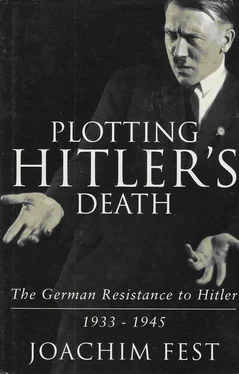
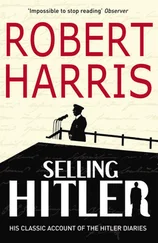
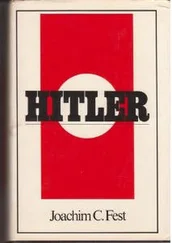
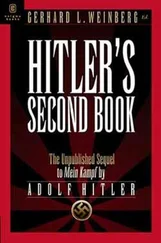
![Traudl Junge - Hitler's Last Secretary - A Firsthand Account of Life with Hitler [aka Until the Final Hour]](/books/416681/traudl-junge-hitler-s-last-secretary-a-firsthand-thumb.webp)





